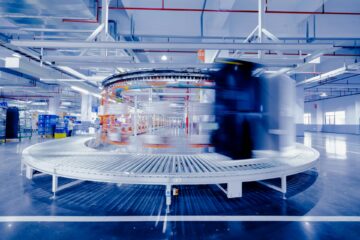In the world of industrial manufacturing, maintenance and machinery downtime come with steep costs. Keeping equipment running efficiently while controlling operational expenses is a challenge many organizations face daily. As companies seek better ROI and operational resilience, they’re increasingly turning to technology and smarter strategies to reduce disruptions and maintenance burdens.
Where the Costs Add Up
Industry estimates suggest the global maintenance, repair, and operations (MRO) market could exceed $700 billion by 2026. Much of this spending is driven by preventable issues. Aging machinery remains one of the top culprits behind unplanned downtime, but it’s often compounded by design flaws, human error, and maintenance practices that aren’t proactive enough.
Being reactive instead of strategic leads to more frequent breakdowns, higher labor costs, and unnecessary stress on assets.
Low-Maintenance Hardware: A Smarter Investment
Choosing hardware that needs minimal upkeep can be a game-changer. Take ultrasonic clamp-on flow meters, for example. These instruments, popular in water distribution and process control environments, lack moving parts—reducing the risk of wear and virtually eliminating the need for servicing.
Integrating such low-maintenance solutions early on reduces system interruptions and lowers total cost of ownership across the asset lifecycle.
Preventive Maintenance: A Global Priority
Preventive maintenance (PM) continues to be the dominant strategy for equipment longevity. More than three-quarters of global manufacturing companies make PM a priority. This method relies on a schedule of regular inspections and servicing to detect issues before they escalate.
PM can extend the working life of critical assets, reduce unplanned stops, and help maintain higher resale values. Though it involves ongoing costs, the savings from avoiding breakdowns often justify the investment.
Predictive Maintenance: A Data-Driven Advantage
More recently, predictive maintenance (PdM) has been gaining traction. Rather than relying on fixed schedules, PdM uses sensors and machine learning to assess equipment condition in real time. These systems identify early warning signs and forecast when servicing is needed.
Although initial implementation is costly, PdM can outperform traditional approaches in cost savings. In fact, the U.S. Department of Energy estimates PdM can deliver 8–12% cost reductions over routine preventive maintenance. The market for these systems is projected to reach $23.5 billion by 2024, underlining their growing role in industrial strategy.
Streamlining Maintenance with Technology
Modern maintenance management is as much about smart planning as it is about physical repairs. Using technology to monitor performance, anticipate problems, and automate reporting allows teams to focus on value-adding work rather than repetitive troubleshooting.
By investing in durable components, adopting sensor-based monitoring, and combining preventive and predictive strategies, manufacturers can build more resilient systems that perform consistently and cost-effectively.
Final Thoughts
Reducing downtime doesn’t happen by accident—it requires intention, investment, and innovation. With the right tools and forward-thinking processes, companies can not only reduce their maintenance burden but also unlock greater productivity, safety, and operational stability for the long haul. For further information on industrial maintenance demands and ways to address them, please see the accompanying resource from Emerson, providers of clamp on ultrasonic flow meters.












